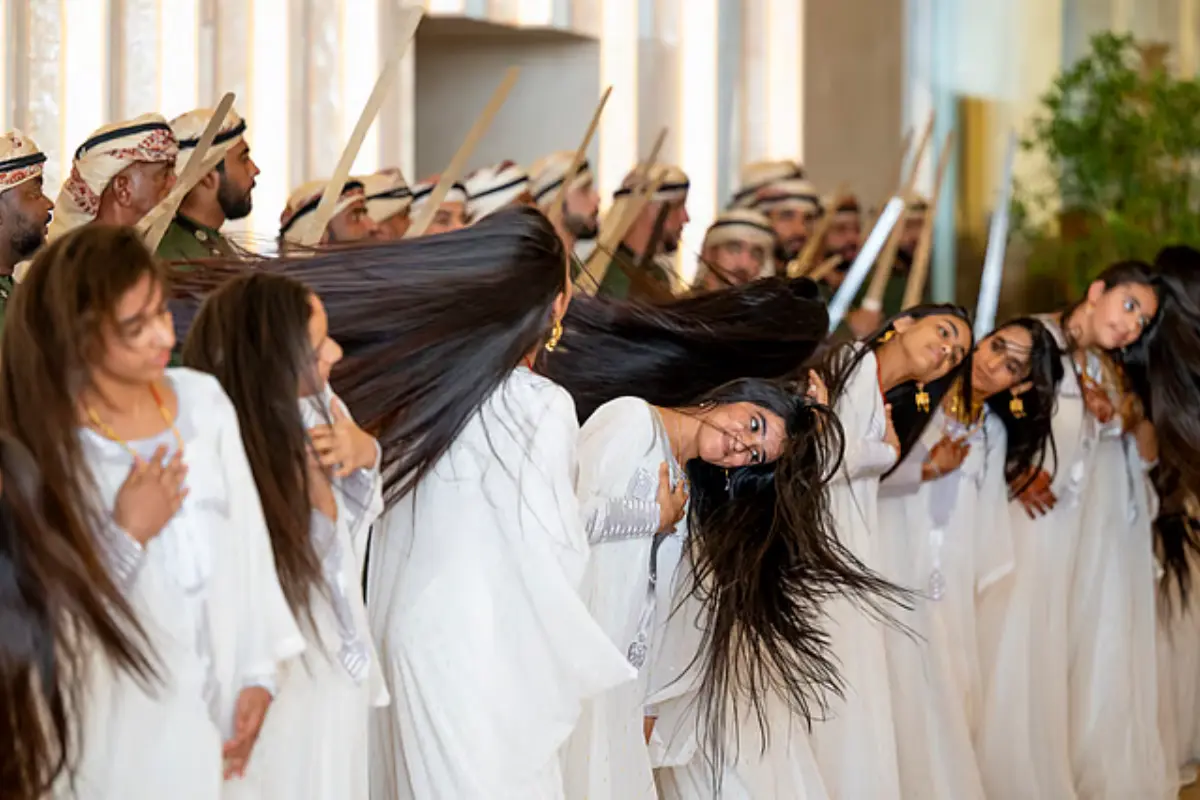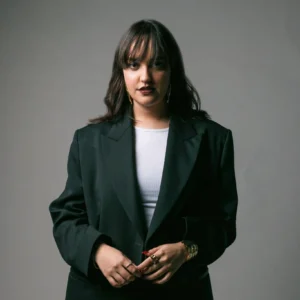When Donald Trump arrived at Abu Dhabi’s Qasr Al Watan on 15 May 2025, the U.S. president found himself flanked by rows of drummers, chanting men, and—most eye-catching for global viewers—young Emirati girls in white gowns whipping their hair side-to-side in the UAE’s UNESCO-listed Al-Ayyala welcome.
@teamtrump WATCH 🚨 @President Donald J Trump arrives in the United Arab Emirates and is greeted with a welcome ceremony! #maga #uae #donaldtrump
♬ original sound – Team Trump
Clips of the ceremony ricocheted across social media within hours, inviting equal parts fascination and finger-wagging.
Detractors framed the hair-swaying as a patriarchal spectacle, while Emiratis countered that the performance is as routine at weddings and school events as any pep rally.
One of the most powerful and beautiful moments during President Donald Trump’s visit to the UAE was the traditional welcome by beautiful young Emirati girls that triggered a lot of haters.
— Sara Alhosani | سارة الحوسني (@SaraAlhosani_10) May 17, 2025
Our heritage doesn’t need permission to exist. It stands tall, just like the daughters who… pic.twitter.com/L5J2ACwpId
Emirati media personality, Sara Alhosani, whose two-minute selfie video quickly racked up millions of views in a day responded to the criticism and weighed in on the cultural significance of the performance. “This dance is not just a performance,” she said, “it’s a proud expression of our heritage, values and identity,” before recounting how, at nine, she felt “pure pride” each time she was chosen to dance at school.
Her rebuttal reframed the viral moment—not as a question of modesty, but of who gets to define a culture’s narrative.
In a follow-up chat with Soigné after her X video went viral, Alhosani wrote:
“I’ve always carried a quiet pride for our traditions, the commanding rhythm of the Ayyala, the fluid elegance of Naa’shaat, the way our dances don’t just move but mean. These aren’t performances. They’re our heartbeat. Golden threads tying ancestor to grandchild.
When I shared that video, just a short clip of us welcoming President Trump with our traditional dances, I never imagined it would become something bigger. I simply wanted to explain the meaning to those who misunderstood. But what happened next was nothing short of extraordinary.
Over 1.5 million people watched. From America. From Europe. People who only knew the UAE through headlines about oil or glass towers suddenly saw something else.
They saw us.
They saw the unshakable unity of the Ayyala, men standing shoulder to shoulder, moving as one soul to ancestral drumbeats. They saw the poetic freedom of the Naa’shaat, where young girls tell stories with the movement of their hair, full of pride, full of joy.
And the comments said it all.
“I never knew this existed.”
“This changes everything I thought I knew.”
“Now I want to visit the UAE for this.”
Culture breaks barriers words cannot.
Too many form their opinions of us from a distance, through filtered newsfeeds, through tired clichés. They hear “Emirates” and picture luxury. But they miss the roots. They miss the soul.
But when our traditions speak, raw, unrehearsed, unashamed, they cut through the noise. They open hearts. They shift narratives.
A teacher from Canada messaged me. She used the video in her classroom. Said her students had never seen the Middle East that way. This wasn’t a PR campaign. It was a cultural whisper that turned into a roar.
We don’t need approval to be proud. There will always be those on the sidelines who want to tell us how to be.
What to wear.
How to dance.
When to smile.
When to hide.
But the truth is: we never asked for permission.
The Ayyala was never about impressing anyone. It’s about standing firm, together, in heritage.
The Naa’shaat isn’t a performance. It’s a memory. It’s a poem. It’s a flame passed from grandmother to granddaughter.
This is ours. And no one gets to rewrite it.
So here’s what I learned. Share your culture, even when they don’t understand. Especially when they don’t understand. Because the moment you do, with pride, with heart, the world listens.
And sometimes, they don’t just listen. They fall in love.
Our heritage doesn’t belong to the past. It belongs to the world we’re still shaping. And when shared with authenticity, it doesn’t just connect us. It transforms us.
That’s not just power.
That’s legacy.”




